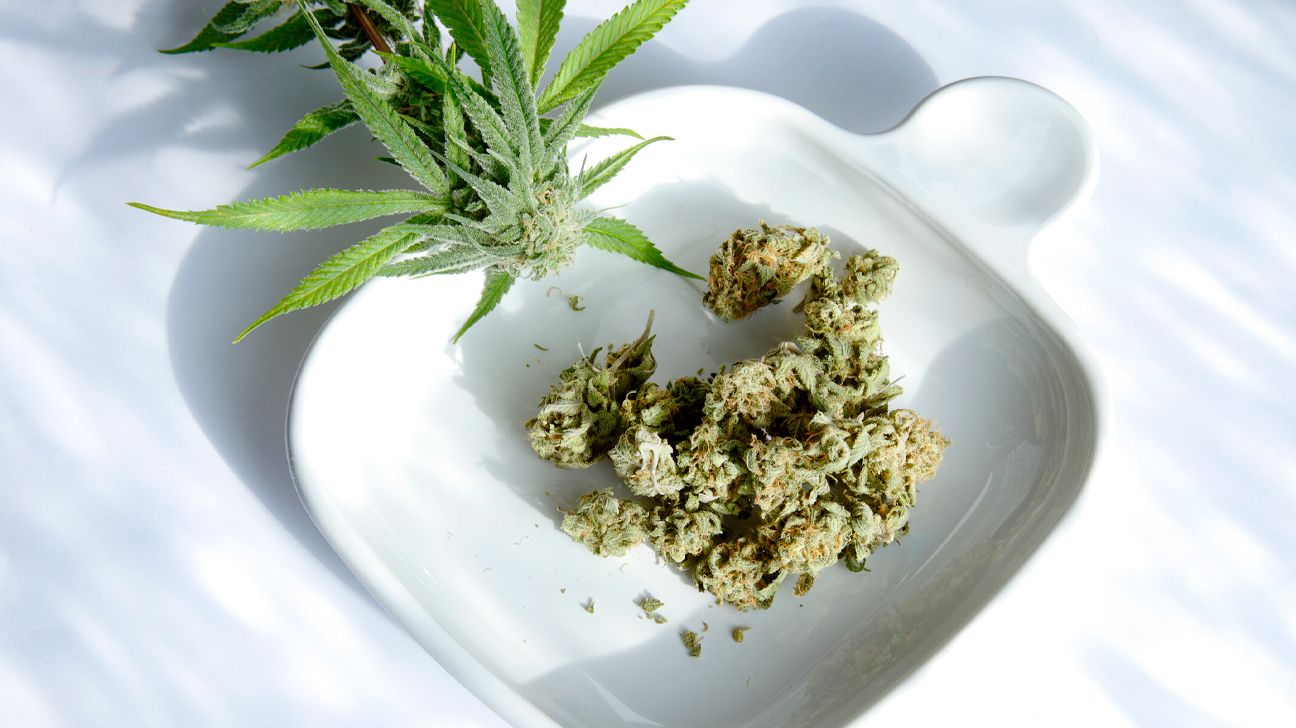4 Facts About Cannabis and Migraine That Might Surprise You
April 22, 2021
Content created for the Bezzy community and sponsored by our partners. Learn More

Steve Cicero/Getty Images
While research is emerging, there’s still a lot to share about cannabis for migraine.
I’ve always been a believer in the therapeutic benefits of cannabis. But when it helped me through the longest, most brutal period of my 10-year journey with chronic migraine, I became a full-on advocate.
At the time, there wasn’t a lot of information available about cannabis that was specific to migraine. So I made it my goal in life to change that.
I dedicated all my free time to researching this topic and learning from doctors and fellow patients.
Here are some of the facts I’ve learned about medical cannabis and migraine that might surprise you.


Cannabis can be both preventive and abortive
A lot of people ask whether cannabis is best for preventing an attack or providing relief. The answer is: both.
In one observational study, patients reported 6 fewer migraine attacks per month with varying daily doses of inhaled and edible cannabis.
A clinical trial investigated cannabis for both prevention and relief.
It found that, for migraine prevention, a 200 mg daily oral dose of combined tetrahydrocannabinol (THC) and cannabidiol (CBD) was as effective as a 25 mg daily dose of amitriptyline (chlordiazepoxide), a common migraine medication.
When administered as an acute treatment, the same dose reduced the intensity of pain in migraine patients by 43.5 percent.
As for how CBD (without THC) could treat migraines, there aren’t any clinical trials. However, a popular cannabis and migraine support group has feedback suggesting CBD is most beneficial as a preventive treatment when taken daily in 30 to 50 mg doses.
In my experience, CBD won’t abort the migraine. But it almost always decreases the pain level significantly. I will occasionally have to re-dose after a few hours if I feel the pain returning. However, my personal experience, like all testimonials and anecdotes, requires confirmation via well-controlled clinical trials.
Our brains and bodies are all different, so a cannabis or CBD product that works for someone may not work for you. It’s also important to maintain an open dialogue with your migraine doctor to ensure it’s appropriate for your situation.
Some cannabis products can make your migraine feel worse
This is the unfortunate error part of the trial and error process. It isn’t uncommon to encounter a cannabis product that exacerbates your symptoms.
And, for some people, anything containing cannabis might cause side effects.
If this happens, discontinue using the product that doesn’t agree with you and talk with your doctor.
Cannabis affects everyone differently. There are many factors — from your genetics to your overall health and tolerance — that can affect your experience.
It doesn’t mean all cannabis will cause you discomfort. You may just need to find the type, dose, and delivery method that works best for your needs.
Migraine disease could be caused by endocannabinoid deficiency
There is a theory that some people with migraine have a deficiency in the natural endocannabinoids that their bodies produce.
This is called clinical endocannabinoid deficiency (CECD). Quite a mouthful, isn’t it?
Our body’s endocannabinoid system (ECS) is responsible for regulating many physiological and cognitive processes, like appetite, memory, metabolism, immune response, and pain sensation.
If we don’t produce enough endocannabinoids to keep our ECS receptors working properly, this creates an imbalance that can cause a whole host of issues.
Respected neurologist and cannabinoid research pioneer Ethan Russo hypothesized that this type of dysfunction could be the underlying cause of certain chronic conditions, like fibromyalgia, irritable bowel syndrome, and, in some cases, migraine.
If Russo’s theory is correct, then it makes sense that cannabinoids found in cannabis, like THC or CBD, could be a helpful remedy, as they are directly or indirectly stimulating the endocannabinoid system.
Cannabis is a neuroprotectant
Animal research shows that cannabinoids may have antioxidant properties that may alleviate symptoms and limit neurological damage to the brain from stroke, seizures, lack of oxygen, and toxic drugs.
Not many people know this, but the U.S. Department of Health and Human Services holds a patent that covers the medical use of cannabinoids (including THC and CBD).
The patent states that cannabinoids can be useful in the prevention and treatment of many neurodegenerative diseases, such as Alzheimer’s disease, Parkinson’s disease, and HIV encephalopathy.
It’s the hope of many of us in the medical cannabis community that facts like these will lead to the declassification of cannabis as a Schedule I drug, which is defined by the United States Drug Enforcement Administration as a substance “with no currently accepted medical use and a high potential for abuse.”
Takeaway
Medical cannabis could be a tool for migraine prevention and symptom management. But it’s not a cure, and it’s not for everyone.
Before trying medical cannabis in any form (even CBD), make sure you discuss it with your doctor to ensure it’s a viable treatment option for you.
You should also be aware that the legality of medical cannabis will vary depending on where you live, so this might not be an accessible option for everyone.
There’s a long way to go where research is concerned, and clinical trials are greatly needed to properly understand the effects medical cannabis has on migraine.
This will help determine the best types, delivery methods, and dosages to benefit those of us living with migraine.
In the meantime, I will continue to learn everything I can about cannabis as it pertains to migraine and make this information accessible to others.
Article originally appeared on April 22, 2021 on Bezzy’s sister site, Healthline. Last medically reviewed on April 19, 2021.
Medically reviewed on April 22, 2021
9 Sources


Like the story? React, bookmark, or share below:
Have thoughts or suggestions about this article? Email us at article-feedback@bezzy.com.
About the author